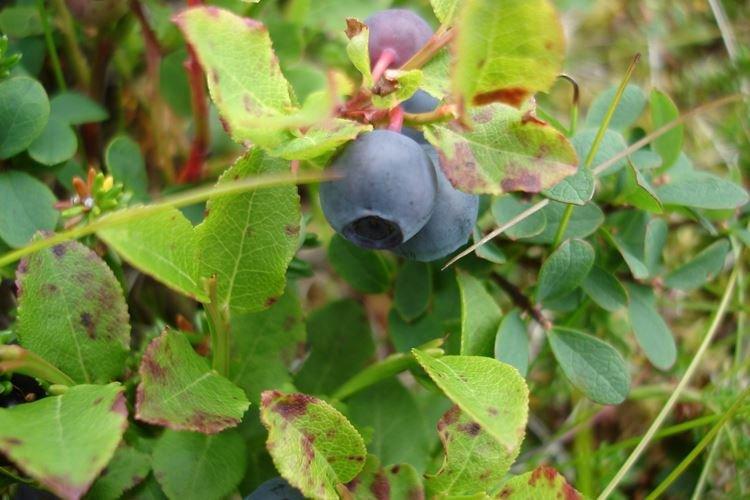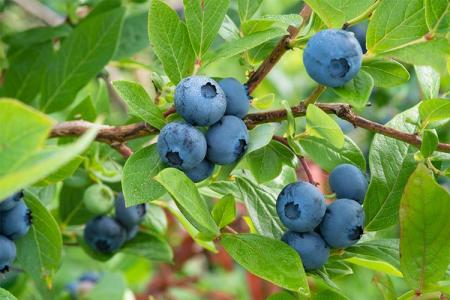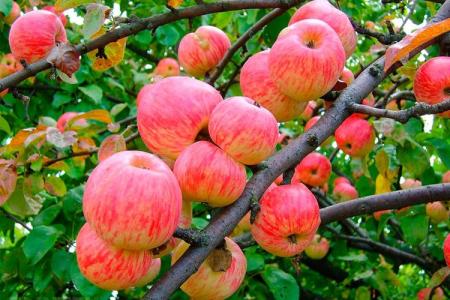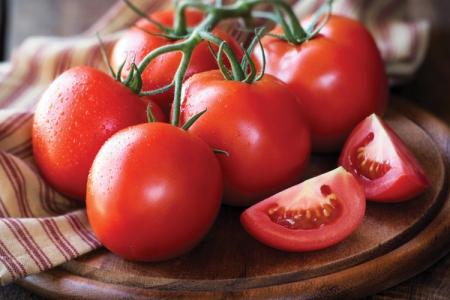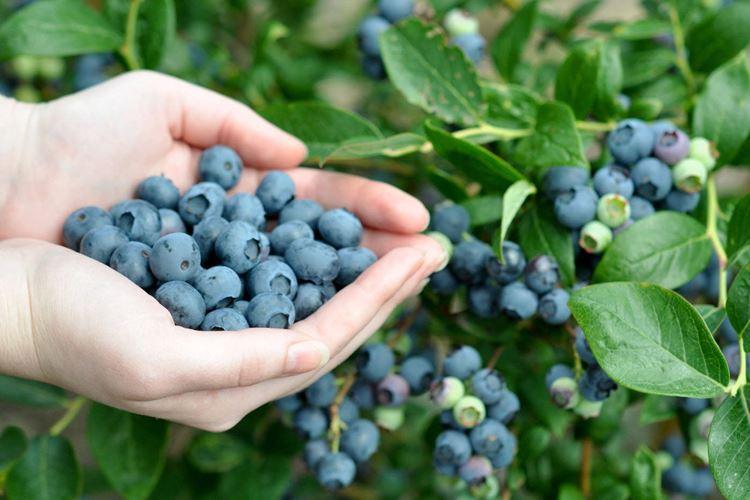
The demand for blueberries is growing every year, because the amazing berry has finally been tasted. It is appreciated by culinary specialists, cosmetologists and doctors, and the beneficial substances in it are preserved even after heat treatment. The amount of vitamins in blueberries is one of the highest, and the calorie content is minimal. We will tell you how to start growing on your own, what care for blueberries should be like and how to choose the perfect variety!
Description and characteristics
Some people still believe that blueberries and blueberries are one berry. And indeed they belong to the same genus, along with lingonberries and cranberries. In its natural environment, it is found mainly in the Northern Hemisphere in Europe, Asia and America.
It was once believed that blueberries are inedible and provoke severe headaches, for which they received a couple of not very poetic names - drunkard or fool. But in fact, the problem is in the eternal neighbor of blueberries - rosemary.
Wild blueberries grow up to a meter and grow wider, but domestic blueberries stretch up to 2 m and more. The leaves are rather small, with an expressive waxy bloom, which gives a light bluish tint. Young shoots are green, but old ones are lignified and covered with brown bark. Pale pink flowers are collected in several pieces, and the berries then grow in the same way.
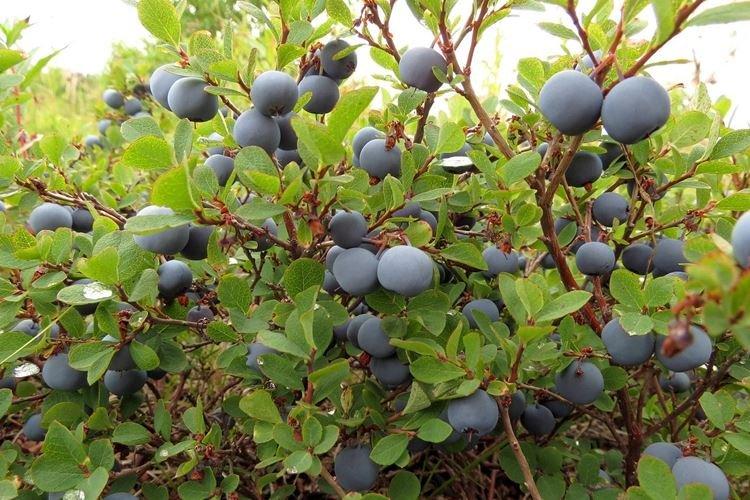
Blueberry varieties
Blueberries can be divided into two large types - common wild and tall garden blueberries. On the plots, it is the garden varieties that came to us from America that are most often planted. Initially, they were only suitable for warm latitudes, but breeders have long ago solved this problem.
Blueberry Patriot
The old variety is over 40 years old and owes its popularity to its amazing yields. With proper care, up to 10 kg of berries can be harvested from one bush.
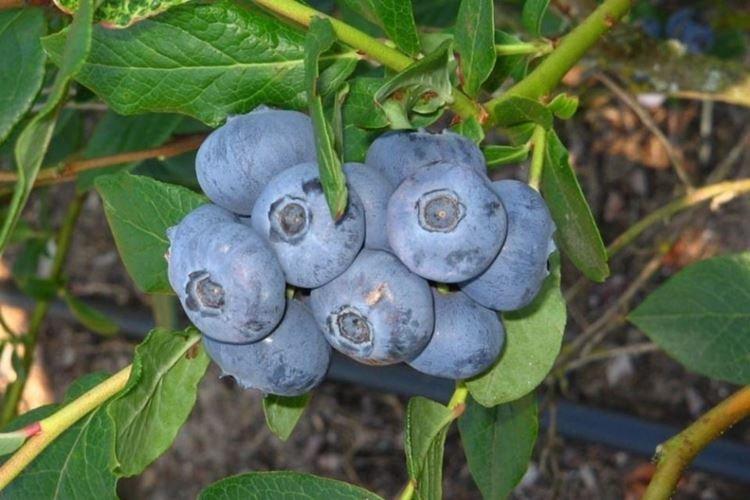
Blueberry Bluecrop
This variety is considered to be the benchmark among commercial blueberry varieties. The bushes are unpretentious, very hardy, give a stable harvest from large berries and are suitable even for beginner gardeners.
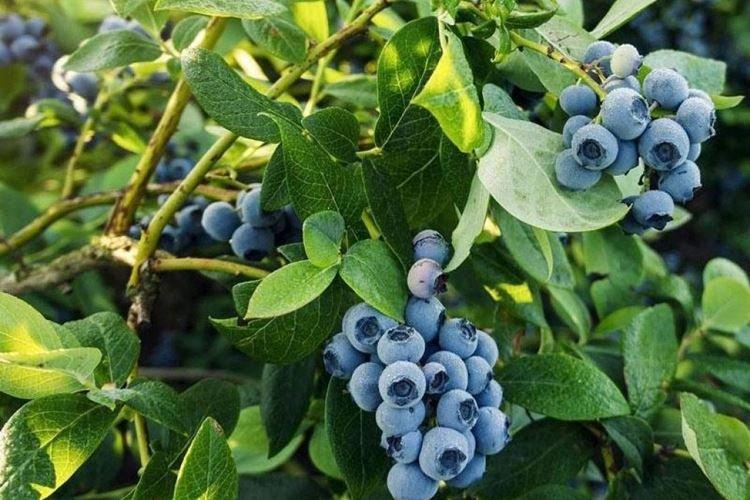
Blueberry Hardible
The summer variety is ideal for industrial planting, because the berries ripen at the same time and tolerate automated harvesting well. At the same time, the bushes are completely unpretentious, and amateurs can easily cope with them.

Northcountry blueberry
The bushes are very compact, they hardly grow up to a meter, and maybe up to 50 cm. But at the same time, up to 2.5 kg of the crop will be harvested from each by the beginning of August.
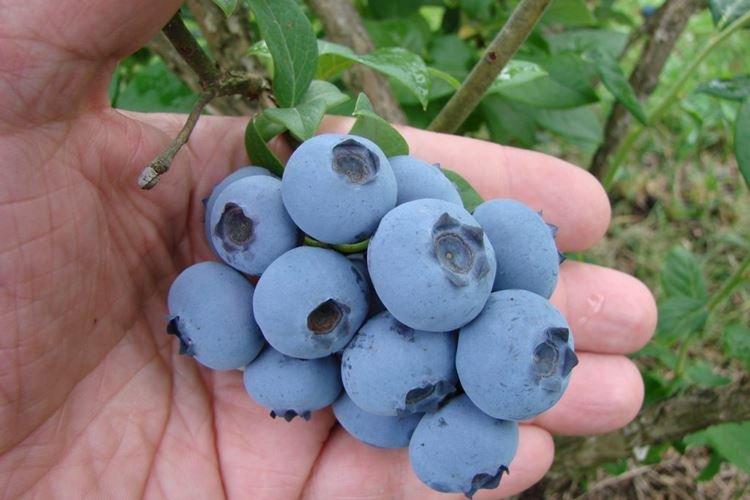
Blueberry Pink Lemonade
A very young and very unusual hybrid is notable for the rare bright pink color of the fruit. The taste of the berries is also not quite typical - sweet and sour.
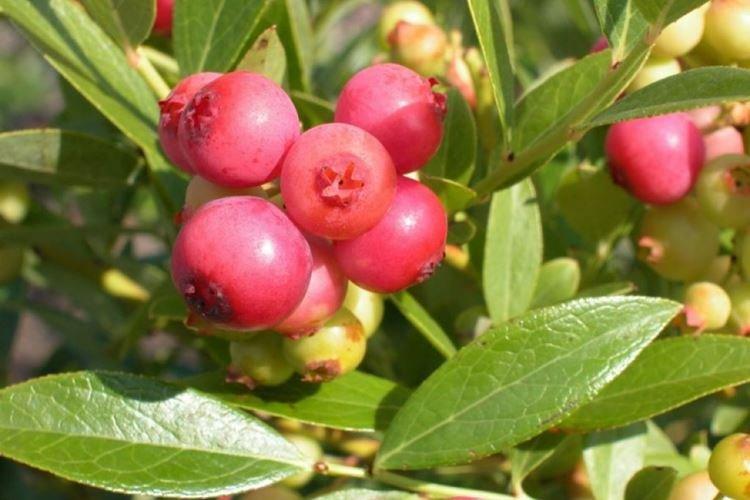
Blueberry Brigitte
The late August variety is characterized by an amazing resistance to long-term transportation and storage. The berries are medium in size, very firm and with a distinct sourness.
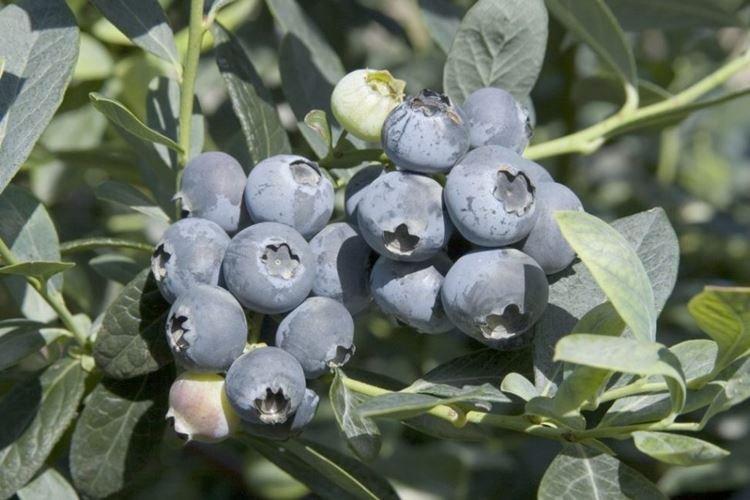
Blueberry Duke
Another old American variety that ripens quickly and evenly. It takes hardly a month and a half from the beginning of flowering to harvest, and this is an absolute record.
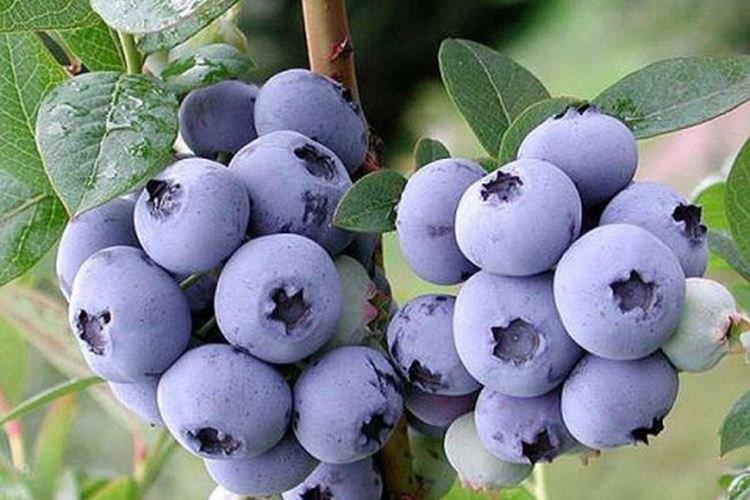
Blueberry Erliblu
Upright bushes are quite compact and do not need to be thinned constantly. The berries do not fall off until they are fully ripe, but they are not very suitable for long-term storage.
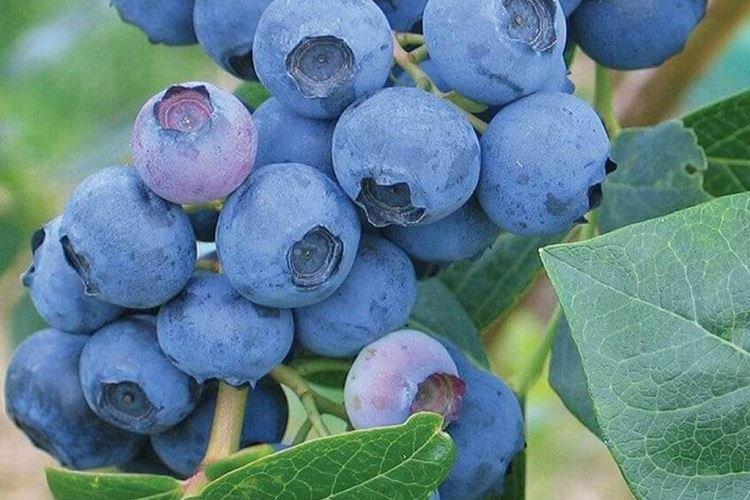
Blueberry Bonus
It is a very large hybrid variety that produces sweet, dense berries up to 3 cm in size. They can be stored in the refrigerator for weeks and can easily survive long journeys.
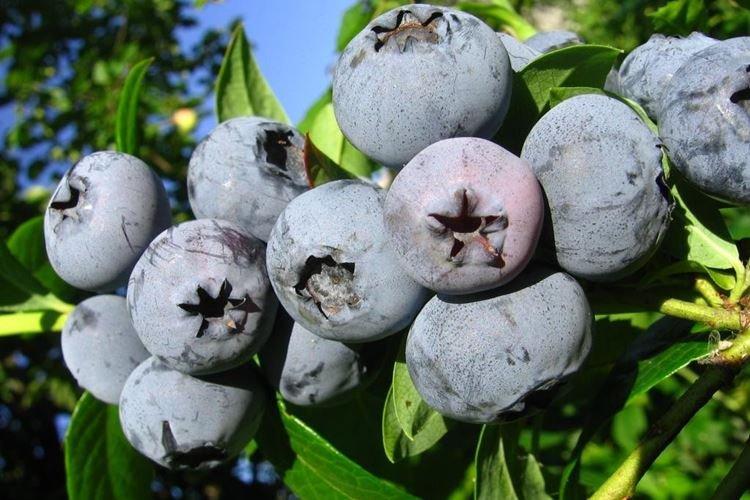
Blueberry River
One of the most popular varieties for industrial cultivation. From a small bush, you can collect up to 10 kg of sweet berries with a slight sour aftertaste.
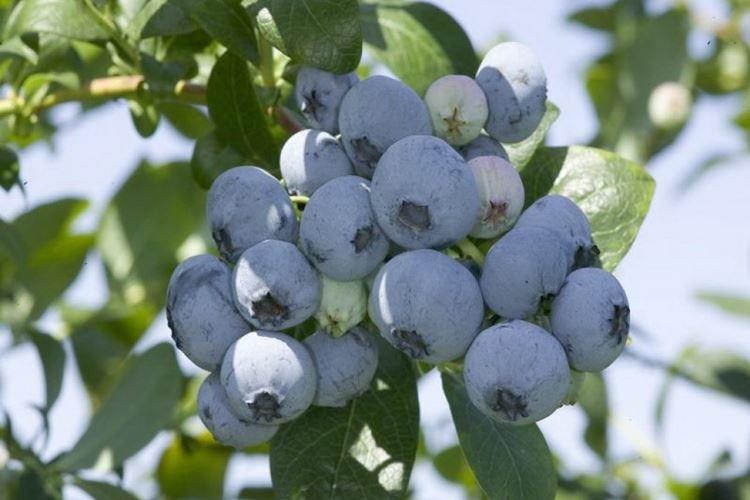
Blueberry Nelson
This is one of the latest varieties that will delight the harvest at the end of the season. The berries are very aromatic, with a slight wine aftertaste.
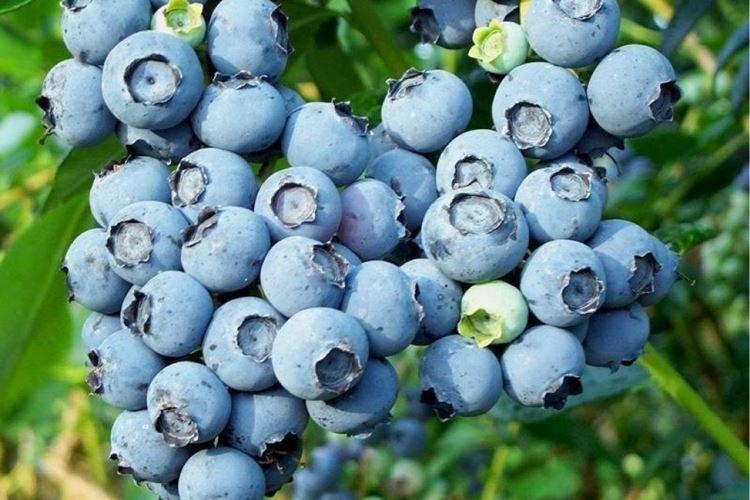
Northland blueberries
The variety is valued for its high frost resistance and is excellent for the northern regions.The berries are not the largest, but firm and very sweet, well suited for desserts and jams.
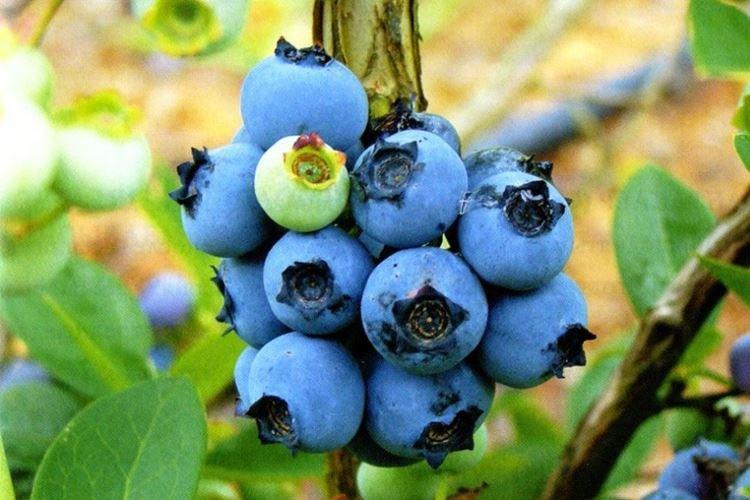
Blueberry Chauntecleer
The variety is notable for its unusual taste and aroma, in which fruit and wine motives are read. It is easy and convenient to harvest from the bushes, because the berries grow from the outside of the branches.
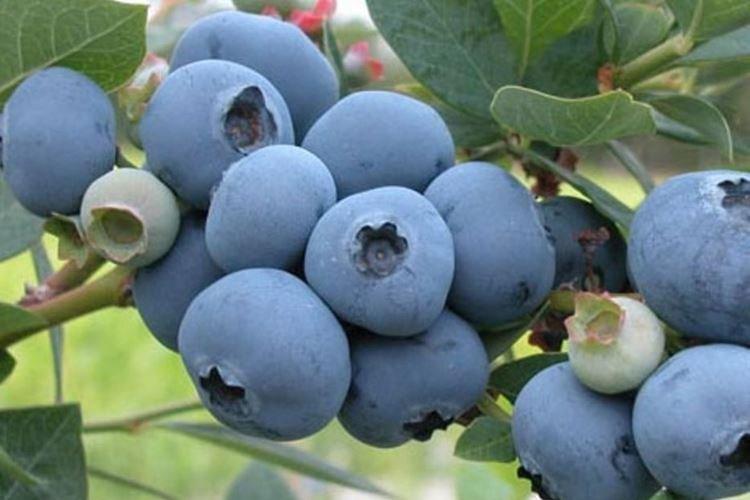
Blueberry Blueberries
The bushes are very powerful and grow quickly, and in the third year they give a generous harvest of their large berries. The fruits ripen all together, so they can be harvested in one go.
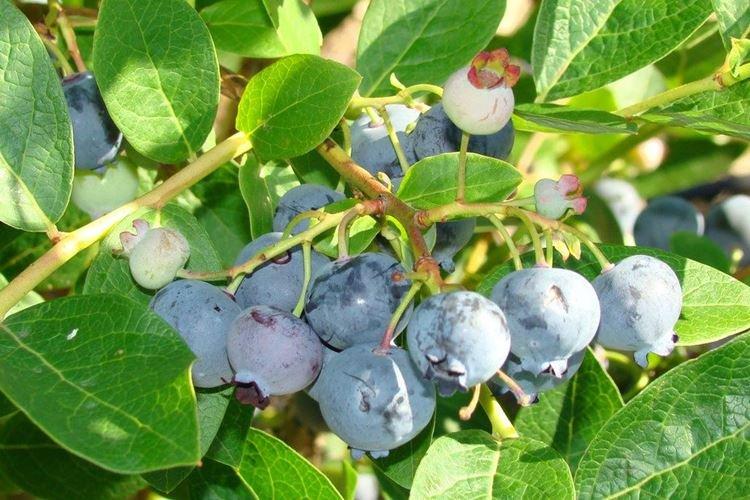
Blueberry Spartan
The early variety gives a bountiful harvest in July, but at the same time it blooms late and is not afraid of spring cold snaps. The berries are well stored and can be easily transported.
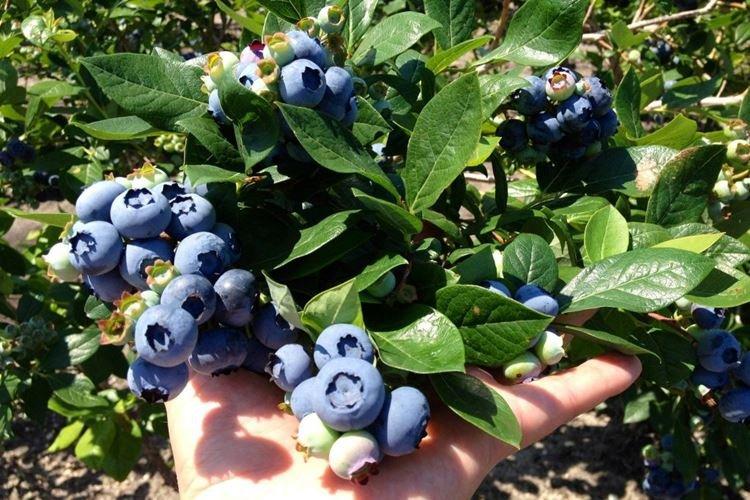
Blueberry Denis Blue
This is an unusual Australian variety that has taken root well in our latitudes. The bushes not only give a rich harvest up to 8 kg, but also have high decorative properties.
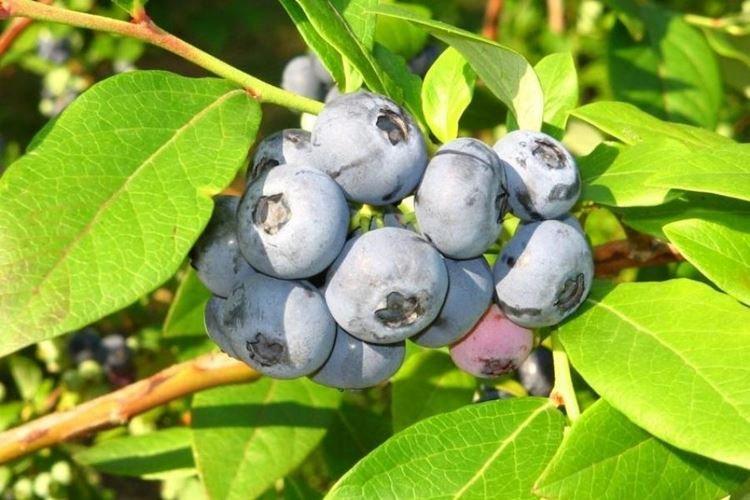
Blueberry Darrow
When grown in the sun, the variety produces surprisingly sweet and very dense large berries. The bushes are not very hardy, but they are very resistant to diseases and pests.

Blueberry care
Although blueberry varieties can differ significantly from each other, the basic subtleties of care remain unchanged. Blueberries are difficult to plant, but after that they are hardly a hassle.
Seat selection
A sunny, bright area is definitely needed, and only rare varieties can live in partial shade. By the way, berries grown in the sun are usually much sweeter than those picked in the shade. Pay attention to the elevations, because the further the groundwater is, the better.
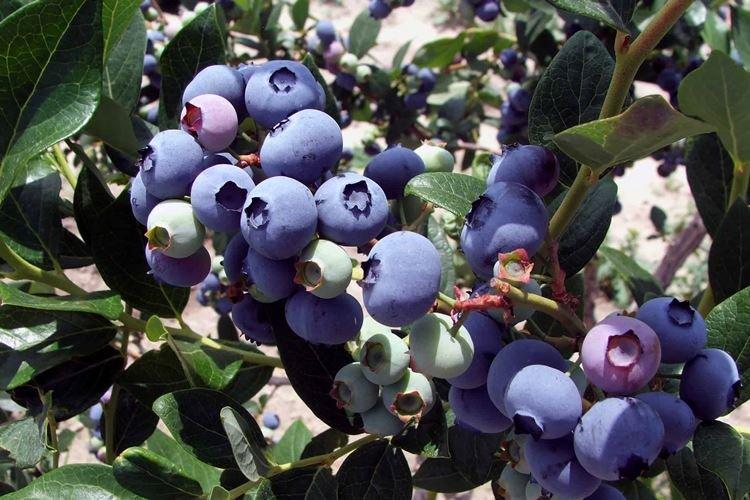
Watering
Blueberries do not tolerate chronic dampness, but they love abundant watering. Until the seedlings take root, it is impossible for the earth to dry out even a little. The first couple of years in the heat, add preventive morning spraying to watering every other day.
At a more favorable time, watering can be slightly reduced - to once every three days. Good drainage is imperative, because stagnant water is destructive. And do not forget to mulch the soil to preserve the beneficial components for a long time.

The soil
Blueberries definitely need acidified soil that allows moisture and air to pass through. On neutral soils, it grows much worse, and alkaline and peat are not suitable at all. This is a fundamentally important point, because in the garden it is much more often necessary to deacidify the soil, and not vice versa.
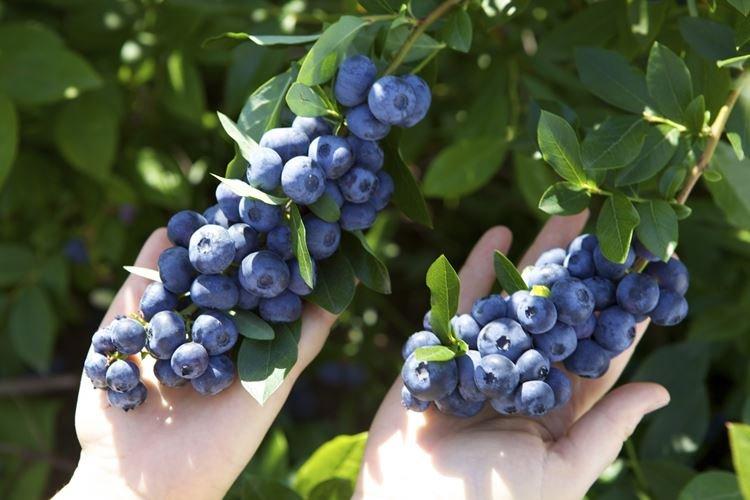
Top dressing and fertilizers
Blueberries do not tolerate organic matter, so the mullein and compost can destroy the bush. Use complex mixtures of superphosphates, ammonium sulfate and potassium approximately 2: 2: 1. For additional feeding, nitroammofoska, magnesium and trace elements are suitable. It is enough to apply good complex fertilizers once a season.
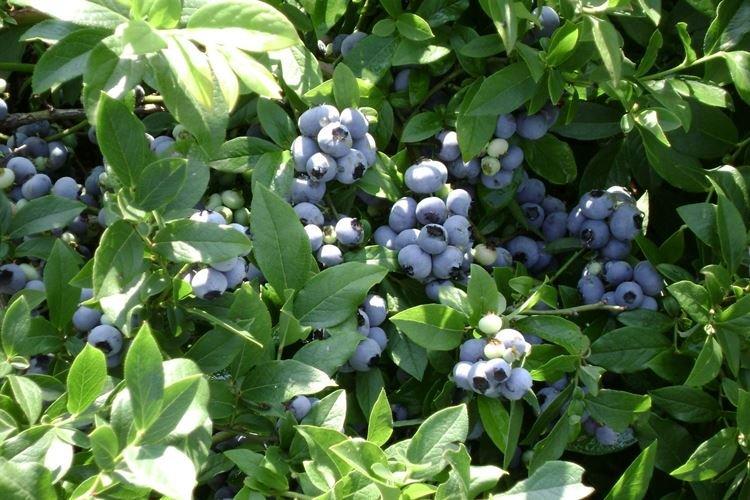
Reproduction
For propagation of blueberries by cuttings, they are harvested in winter, while the tree is still dormant. We need adult and mature shoots that are perfectly stored in bunches in cellars and refrigerators. When planting, be sure to use stimulants and prepare the greenhouse, because blueberries themselves are very poorly rooted.
You can use young cuttings from side branches or new shoots. They are harvested in early July, while capturing a fragment of last year's wood. Rooting is a little faster, but a greenhouse is still needed.
Some varieties develop underground stolons. These are rhizome shoots, from which new plants, associated with the mother bush, then sprout. The strongest and healthiest of them can be separated and planted separately.
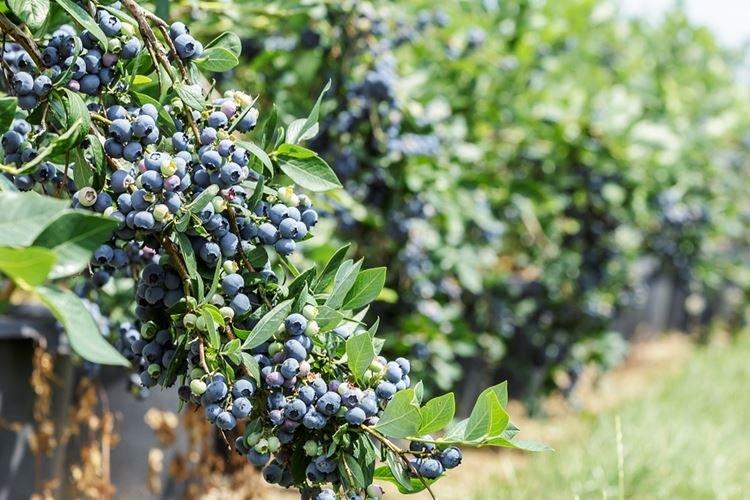
Wintering
Winter hardiness is one of the important criteria for choosing blueberry varieties, so you need to take into account the specifics of your region. Now there are enough species that almost never freeze even at -40 degrees. But if the winter is snowless, it’s better to take care of the shelter anyway.
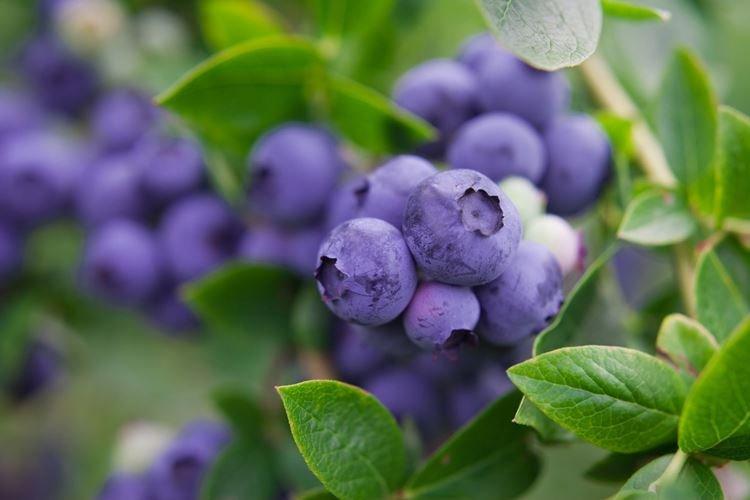
Pruning
Blueberries are very rich in harvest, and one bush can easily have more than 7 kg of berries. It is inherently prone to overload, so branches must be thinned out in the spring.Otherwise, during the season, they can simply break off under the weight of the harvest, and the berries will fall to the ground.
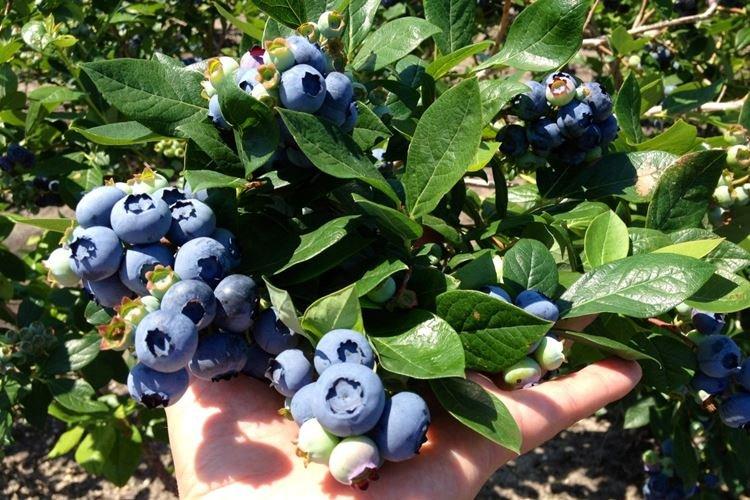
Planting blueberries
The best and easiest way to take root is seedlings in containers - with a root system closed from external influences. Indeed, in this case, the tree is exposed to minimal stress, and it is impossible to damage the rhizome. Planting does not depend on the time of year, be it at least the height of summer.
For planting, dig a hole 50x50x50 cm and cover the walls with water-permeable agrotextile. Fill the bottom with a substrate of peat, sand and coniferous sawdust, add a little fertilizer and nitroammophos. For a dense planting or creating a hedge, it is more convenient to immediately dig a trench, but maintain a distance between the seedlings of 1-2 meters, depending on the growth of the variety.
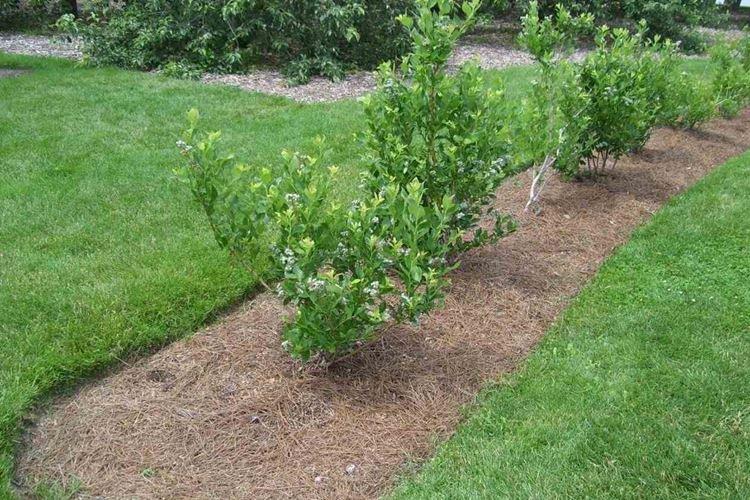
If the soil is too heavy or the water table is close to the surface, ridge landing is used. Blueberries are planted on a mound of sawdust and peat in a small hole 10 cm deep. The soil from the top layer must be carefully scattered around, and on top, it must be mulched 10 cm.
On an industrial scale, blueberries are planted in large containers with wooden sides. It is longer and more expensive, but on the other hand, the berry grows better and is almost not affected by diseases with pests. As a result, you can even double the yield, so that the costs are fully paid off.
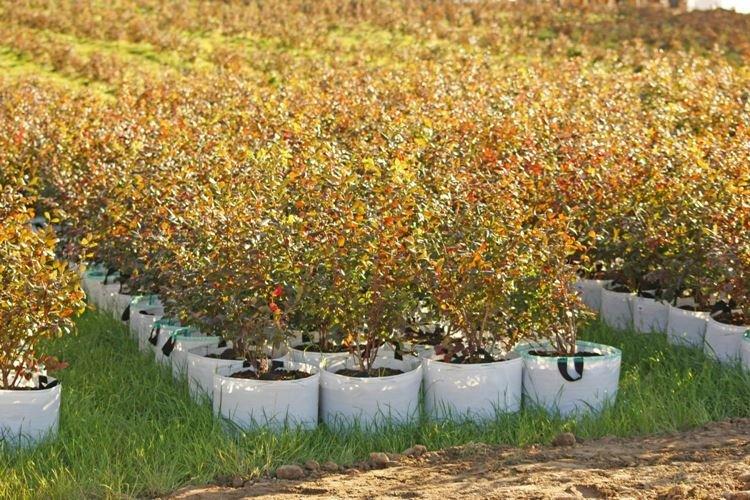
Diseases and pests: how to fight
Oddly enough, the main enemy of blueberries when the crop ripens is not insects and diseases, but birds. To avoid this, on an industrial scale, the beds are usually covered with a fine mesh. It can also be used for other berries and fruit bushes.
In the spring, beetles eat leaves and buds, and their larvae destroy the root system. If you do not thin out the bush in time and do not remove old branches, glass can settle. Don't forget about aphids, spider mites and the rest of the standard set of garden pests.
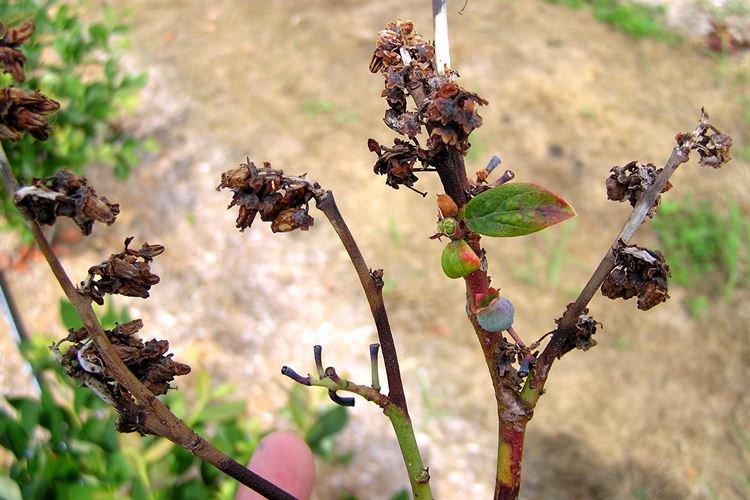
Blueberries have a specific fungus that causes berries to mummify. Timely cleaning of volunteers and mulch will help prevent the spread of spores. Gray rot and anthracnose usually affect ripe fruits, but sometimes transfer to wood.
Leaves covered with small spots that gradually shrink are a sure sign of coccomycosis. Timely preventive treatment with insecticides and fungicides is best for all these problems, but remember that blueberries have sensitive superficial roots.
